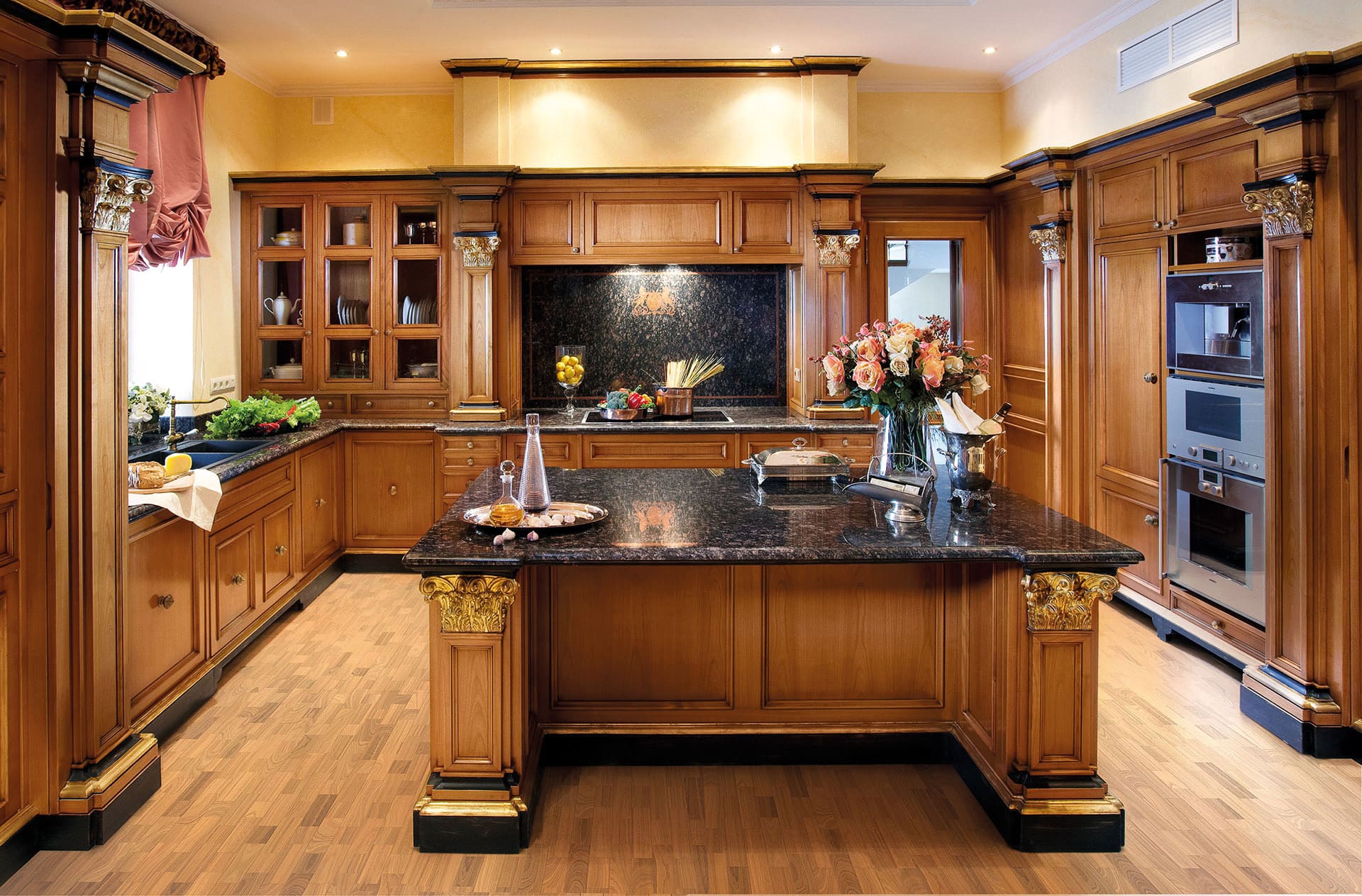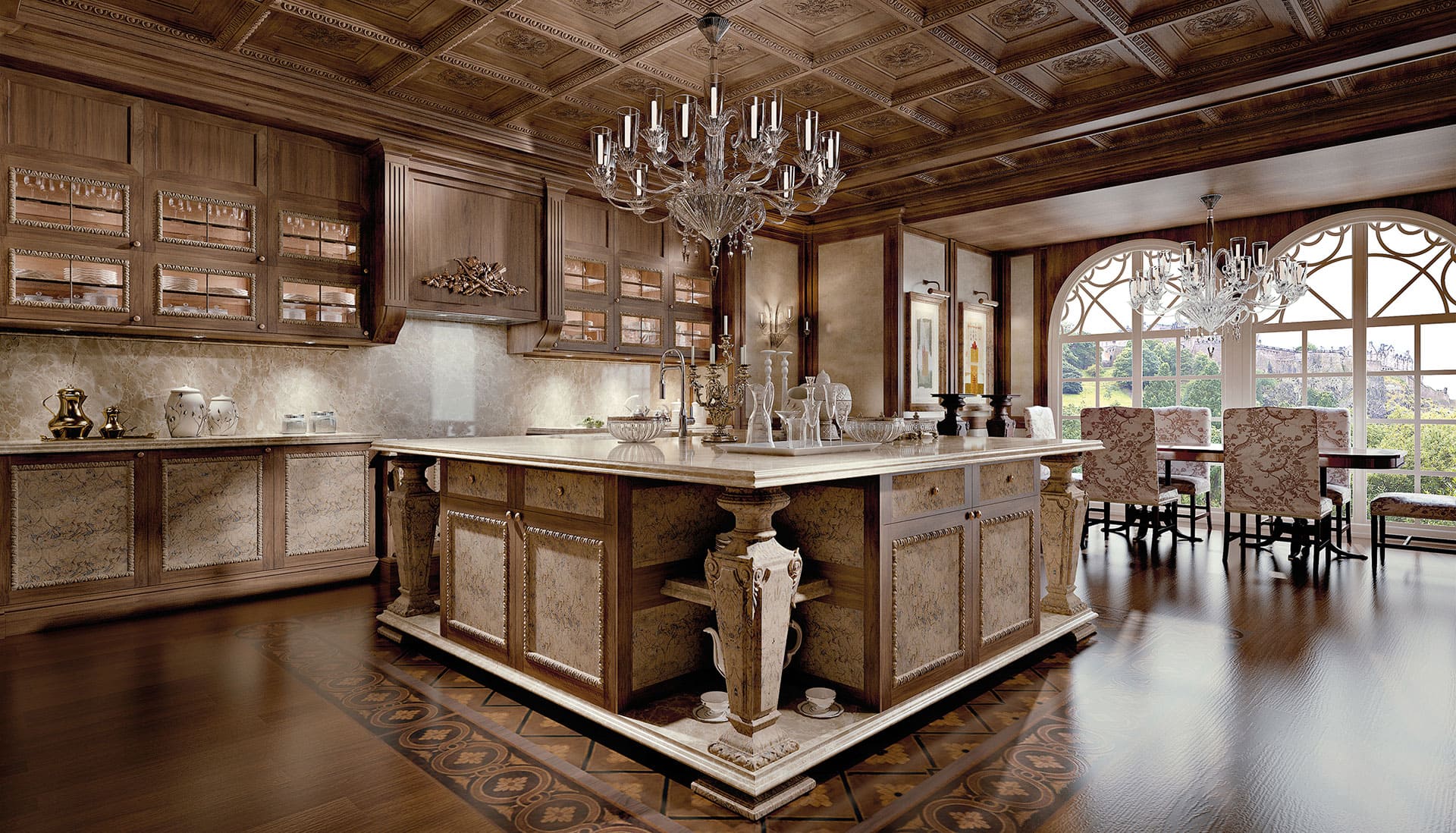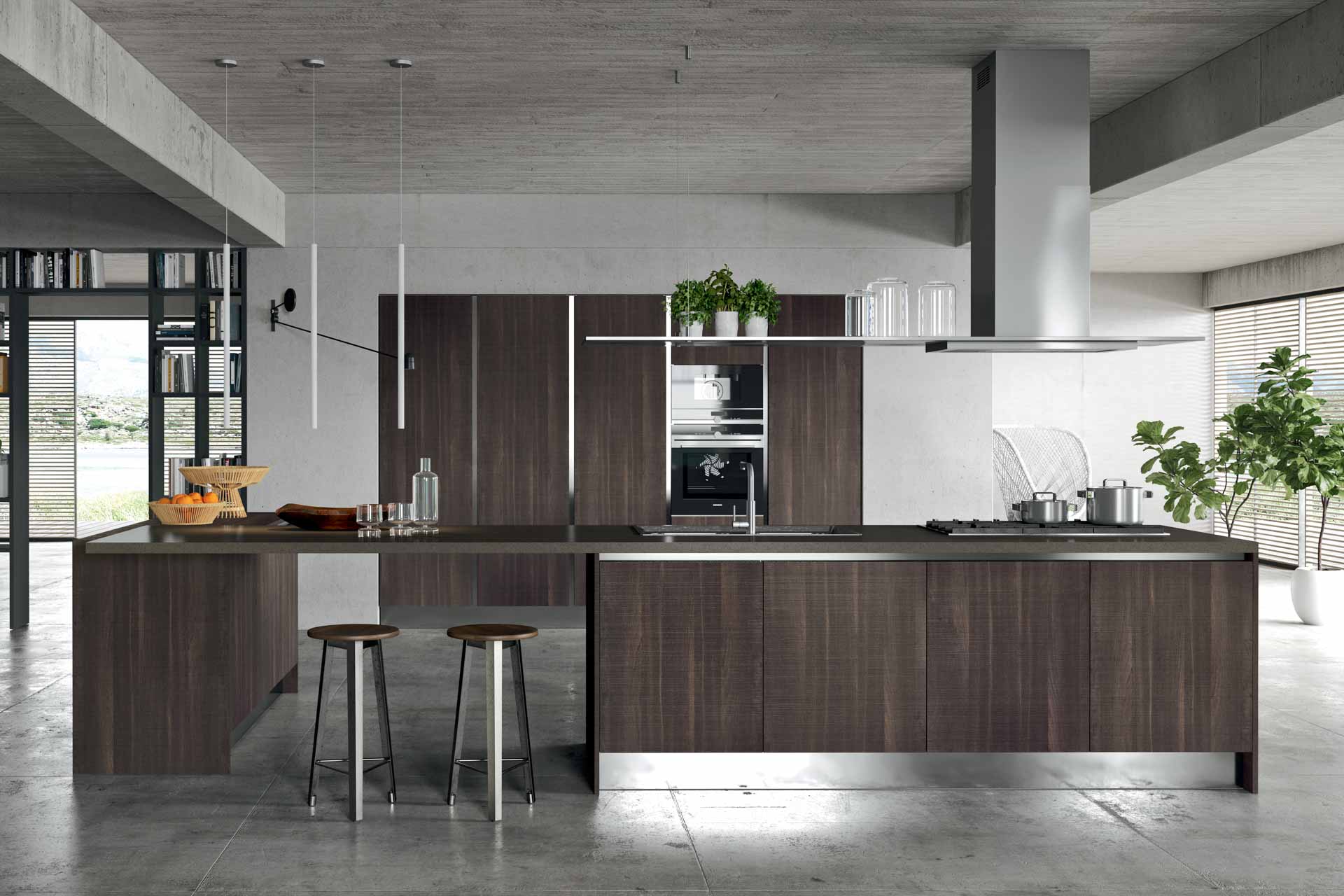Design Elements of Italian Style Kitchen Cabinets

Italian kitchen cabinets are renowned for their timeless elegance, craftsmanship, and attention to detail. They blend functionality with aesthetic appeal, offering a wide range of styles to suit diverse tastes and home designs. Understanding the key design elements will help you choose the perfect cabinets for your kitchen renovation.
Characteristic Features of Italian Style Kitchen Cabinets
Italian kitchen cabinet styles are defined by a combination of materials, hardware, and design motifs. The choice of materials significantly impacts the overall look and feel, while hardware and design motifs add personality and character.
| Style | Materials & Finishes | Hardware | Design Motifs |
|---|---|---|---|
| Tuscan | Solid chestnut or oak, distressed finishes, often with a warm, honey-toned stain. | Antique brass or wrought iron, often with decorative elements. | Simple, clean lines; possibly incorporating decorative carvings or inlays. |
| Modern | Lacquered finishes in high-gloss or matte; materials such as MDF or high-quality veneer are common. | Sleek, minimalist handles, often integrated into the cabinet doors or featuring brushed stainless steel. | Clean lines, geometric shapes, and a focus on functionality. |
| Rustic | Reclaimed wood, showing natural imperfections and variations in color; often finished with a clear coat to highlight the wood grain. | Simple, functional knobs or pulls in dark metal finishes. | Visible wood grain, uneven surfaces, and a sense of aged charm. |
Italian Kitchen Cabinet Color Palettes
Color plays a crucial role in setting the mood and style of an Italian kitchen. The choice of color scheme should complement the overall design and create a cohesive atmosphere.
Italian style kitchen cabinets – Here are five color schemes commonly used in Italian kitchen cabinetry:
- Warm Neutrals: Creamy whites, beige, and soft greys create a calming and inviting space, suitable for Tuscan or Rustic styles. They evoke a sense of warmth and tranquility.
- Mediterranean Blues: Shades of blue, from soft aqua to deep azure, evoke the sea and sky, ideal for a coastal-inspired kitchen. This palette fosters a sense of serenity and openness.
- Earthy Tones: Deep browns, greens, and terracotta create a grounded and natural feel, perfectly complementing Rustic or Tuscan designs. These colors provide a sense of connection to nature.
- Modern Monochromes: Shades of grey, white, and black create a sophisticated and sleek look, particularly suitable for Modern Italian kitchens. They convey elegance and simplicity.
- Bold Jewel Tones: Deep emerald green, sapphire blue, or ruby red add a touch of drama and luxury. These colors are best used as accents in a predominantly neutral palette, creating a focal point and adding vibrancy.
Construction Methods of High-Quality Italian Kitchen Cabinets, Italian style kitchen cabinets
High-quality Italian kitchen cabinets are built to last, using time-tested construction methods and premium materials.
The three main construction methods are:
- Solid Wood: Offers superior durability, strength, and a luxurious feel. It’s the most expensive option but provides lasting value. Examples include cherry, walnut, and oak.
- Veneer: A thin layer of real wood glued onto a core material (usually MDF or plywood). It offers a more affordable alternative to solid wood while retaining the aesthetic appeal of real wood. Veneer is durable and requires less maintenance than solid wood.
- MDF (Medium-Density Fiberboard): A manufactured wood product that’s highly versatile and affordable. It’s often used as a core material for veneer cabinets or painted cabinets. MDF is less durable than solid wood but can be finished to a high standard.
Popular Italian Kitchen Cabinet Styles and Trends: Italian Style Kitchen Cabinets

Italian kitchen cabinets are renowned for their craftsmanship, elegance, and timeless appeal. Understanding the various styles and current trends allows homeowners to select cabinetry that perfectly complements their personal taste and the overall design of their kitchen. This section will explore popular Italian kitchen cabinet styles and highlight emerging design trends influencing material choices and finishes.
Comparison of Italian Kitchen Cabinet Styles
The following table compares three distinct Italian kitchen cabinet styles: Shaker, Country, and Minimalist. These styles showcase the diversity within Italian design, offering options for various tastes and kitchen aesthetics.
| Style | Design Elements | Materials | Aesthetic |
|---|---|---|---|
| Shaker | Simple, clean lines; flat-panel doors with recessed or raised panels; functional hardware; often incorporates natural wood grains. | Solid wood (oak, cherry, walnut); painted finishes (often muted tones); occasional use of stone or marble. | Classic, timeless, understated elegance; blends seamlessly with both traditional and contemporary settings. |
| Country | Ornate details; decorative carvings; arched or curved elements; distressed finishes; often features glass-fronted cabinets. | Solid wood (often darker woods like chestnut or cherry); textured finishes; wrought iron hardware; may incorporate painted accents. | Rustic charm; warm and inviting atmosphere; evokes a sense of traditional Italian countryside living. |
| Minimalist | Sleek, linear design; handleless cabinets; seamless integration of appliances; emphasis on functionality and clean lines. | Lacquered wood; high-gloss finishes; matte finishes; use of metals (stainless steel, aluminum) for accents. | Modern, sophisticated; clean and uncluttered appearance; maximizes space and light. |
Emerging Trends in Italian Kitchen Cabinet Design
The Italian kitchen cabinet design landscape is constantly evolving. Three prominent trends are shaping the industry: the integration of smart technology, the embrace of sustainable materials, and the exploration of bold color palettes.
The integration of smart technology is transforming kitchen functionality. This includes features such as integrated charging stations within cabinets, automatic lighting systems triggered by motion sensors, and smart waste disposal systems. These advancements influence cabinet design by requiring careful consideration of internal space and wiring configurations.
Sustainability is becoming increasingly important, driving the use of reclaimed wood, recycled materials, and eco-friendly finishes. This trend aligns with the growing awareness of environmental responsibility and encourages the use of locally sourced materials, reducing carbon footprints and supporting local economies. Cabinet styles are adapting to incorporate these sustainable materials, often showcasing their natural beauty rather than masking them with heavy treatments.
Bold color palettes are adding vibrancy and personality to Italian kitchens. While neutral tones remain popular, there is a growing trend towards incorporating saturated colors like deep greens, rich blues, and warm terracotta hues. These colors are often used as accent colors on cabinet islands or as a statement piece in a predominantly neutral kitchen. This trend impacts the choice of finishes, often leaning towards high-gloss lacquers to enhance the color’s vibrancy.
Modern Italian Kitchen Design with Custom Cabinetry
Imagine a modern Italian kitchen featuring custom cabinetry in a warm, neutral palette. The base cabinets are crafted from sustainably sourced oak, finished in a matte white lacquer. The upper cabinets, in contrast, are made of sleek, dark-grey lacquered wood, creating a sophisticated visual contrast. The island, the focal point of the kitchen, is constructed from light-grey marble, providing a striking textural element. The hardware throughout is minimalistic, consisting of sleek, brushed nickel bar handles on the lower cabinets and integrated push-to-open mechanisms on the upper cabinets. The backsplash is a subtle, textured stone tile in a complementary light grey shade, creating a cohesive and elegant look. The overall aesthetic is clean, modern, and functional, reflecting the best of contemporary Italian design while incorporating sustainable and high-quality materials.
Integrating Italian Style Cabinets into Different Kitchen Designs

Italian style kitchen cabinets, with their emphasis on craftsmanship, timeless elegance, and rich materials, offer remarkable versatility. They can seamlessly integrate into a wide range of kitchen design styles, enhancing the overall aesthetic and functionality. The key lies in understanding the nuances of each style and choosing complementary elements to create a cohesive and beautiful space.
Italian Style Cabinets in Traditional Kitchens
Traditional kitchens often feature warm, inviting spaces with a focus on classic details. To integrate Italian style cabinets successfully, opt for rich wood tones like cherry or walnut, possibly with a slightly distressed finish to enhance the sense of age and history. Consider raised-panel doors for a more formal look. The color palette should be warm and earthy, incorporating creams, beige, and muted greens. Complementary design elements could include ornate hardware, marble countertops, and a large, farmhouse-style sink. The overall effect should be one of sophisticated rusticity, blending the timeless elegance of Italian craftsmanship with the comforting charm of a traditional kitchen.
Italian Style Cabinets in Contemporary Kitchens
Contemporary kitchens are characterized by clean lines, minimalist aesthetics, and a focus on functionality. Here, Italian style cabinets can be adapted by choosing sleek, slab-door styles in neutral colors like white, gray, or a sophisticated charcoal. High-gloss finishes can add a touch of modern glamour. The color palette should be restrained, perhaps with pops of color in accessories or backsplash tiles. Complementary design elements might include stainless steel appliances, glass-fronted cabinets, and a simple, geometric backsplash. The goal is to create a sophisticated, uncluttered space where the quality of the cabinetry speaks for itself.
Italian Style Cabinets in Farmhouse Kitchens
Farmhouse kitchens blend rustic charm with modern practicality. To integrate Italian style cabinets, select designs that evoke a sense of handcrafted quality. Consider painted cabinets in soft, muted colors like sage green, pale blue, or creamy white. Distressed finishes or subtle distressing can add to the rustic feel. The color palette should be light and airy, perhaps with accents of natural wood or metal. Complementary design elements could include open shelving, a large island, and pendant lighting. The combination of Italian craftsmanship and farmhouse aesthetics creates a warm, inviting, and highly functional space.
Cabinet Size and Layout for Efficient Italian Style Kitchens
The size and layout of your cabinets are crucial for creating an efficient and aesthetically pleasing Italian style kitchen. Careful planning ensures optimal storage and workflow, maximizing the beauty and functionality of your cabinetry.
- L-Shaped Layout: This layout is ideal for medium-sized kitchens, offering ample counter space and storage. Pros: Efficient use of corner space, good workflow. Cons: Can feel cramped in smaller kitchens.
- U-Shaped Layout: Perfect for larger kitchens, offering maximum counter space and storage. Pros: Abundant storage and workspace. Cons: Can feel isolating if not properly designed with an island or peninsula.
- Galley Kitchen: Suitable for narrow kitchens, maximizing space utilization. Pros: Efficient use of space, good workflow. Cons: Limited counter space and storage.
Proper planning, considering factors like appliance placement, traffic flow, and available space, is key to maximizing both the aesthetic appeal and the functionality of your Italian-style kitchen.
